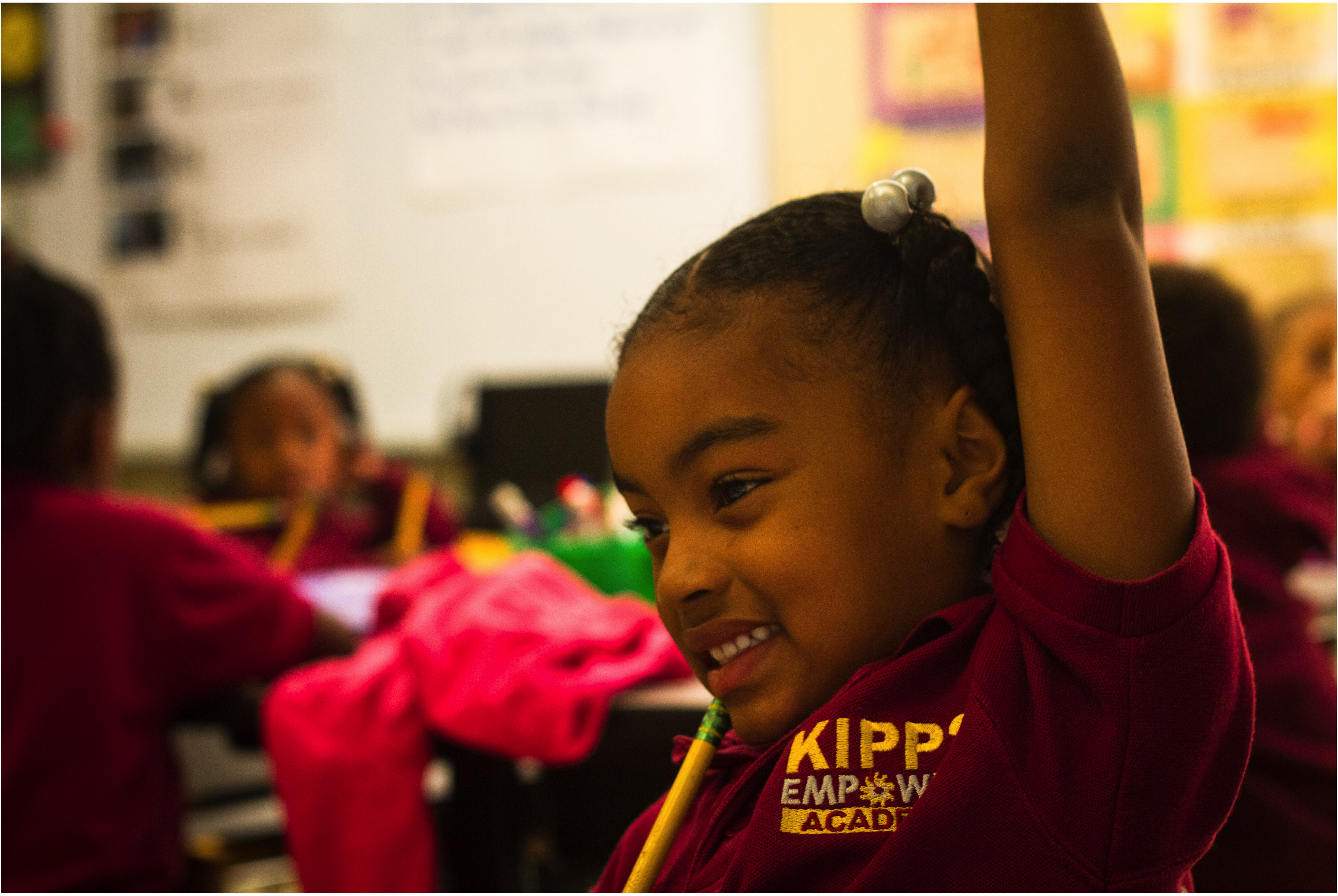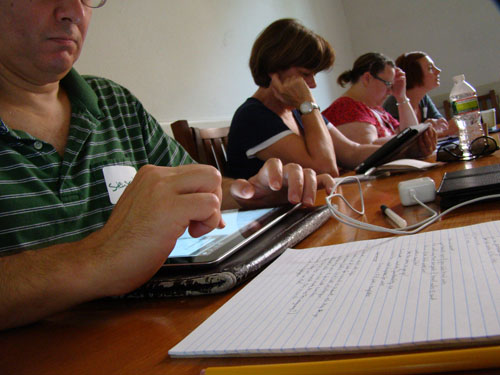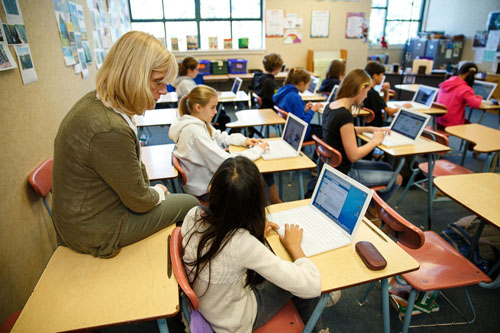Disrupt and Conquer! 子どもたちが学校に置き去りにされないようにするために、テクノロジーはどこまでできるのか? 国内外の業績格差を解消しようとするアメリカの競争において, 混合学習モデルはいつになったら、既存の主流の教室システムを破壊するほど効果的になるのでしょうか?
中に 2008, Michael Horn and Clayton M. Christensen co-authored the book かく乱クラス: 世界が学ぶ道をどのように破壊的イノベーションを変更します (マグローヒル). 今日, as executive director of the Innosight Institute, Horn leads a team that studies the innovative ways technology is already transforming America’s education system into one in which every student, whatever his/her learning needs, can realize his/her full potential. Heather Staker is a senior research fellow for the Education Practice at Innosight Institute and the author of “The rise of K-12 blended learning: Profiles of emerging models.”
I asked Michael and Heather to share their insights on blended learning in this week’s edition of 教育のためのグローバル検索.
Heather, can you briefly describe the term “ブレンディッドラーニング” and the four different types of models that serve as blended learning?
Blended learning is a formal education program that includes two components. The first is online delivery of content and instruction, where the students have at least some control over the time, 場所, パス, and/or pace of their learning. The second is that the students also attend a supervised brick-and-mortar location.
Through our research, we are observing four main models. The Rotation model is any time students rotate on a fixed schedule between online learning and other modalities for any given course. In the Flex model, student schedules are more fluid and content and instruction are delivered primarily by the Internet. The Self-Blend model is any time students take one or more courses entirely online to supplement their traditional courses. The Enriched-Virtual model involves students dividing their time within each course between attending campus and learning remotely online.
マイケル, which of the four models do you believe is best?
None of the models is “the best” per se. この時点で, different schools will be able to put in place different models depending on their distinct needs and capabilities. 長期, I am most intrigued by the Flex model and believe that a combination of it and the Self-Blend model will likely represent the ideal educational model. The reason is that it most naturally puts students first so that all students can personalize and own their learning, which should mean more motivated students and more effective learning for all. The Flex model also creates natural and potentially rich opportunities for students to interact with other students to engage in challenging projects based on each student’s needs while preserving and potentially strengthening activities such as fitness and the arts.
Can you give me a real life example of the Flex model?
One of the best examples I have seen of the flex model was in Morgan Hill, カリフォルニア. This is a district south of San Jose where about a third of its students are Hispanic and I believe over a third of its students are on free-and-reduced price lunch. The school is called the Silicon Valley Flex Academy – グレード 6 スルー 12. As you walk into the school there are a couple of huge open spaces on either side where every student has his/her own office. In this space, 各学生は彼/彼女の自身のコンピュータを持ってい. 学生は、彼らが好きなもので、自分のスペースを飾るために奨励されている (大人が仕事でオフィスを飾るかもしれないのと同じ方法で). There are break out classrooms around the perimeter of the building. Here teachers are getting the data on how the kids are doing. Teachers can pull students into these break-out classrooms in very small groups. The teacher is then able to focus on a student’s individual issues. The teacher’s job is totally different in this arrangement. The fascinating thing was how much ownership the students have over their learning. They all knew exactly what was expected of them the entire year. They knew exactly how they were doing at any point. Their job was to learn the material. If they could get the work done during the school day there was no homework. So it was up to the individual students to make those decisions.
You say “the teacher’s job is totally different in this arrangement.” Were teachers learning on the job? Did you see any challenges in terms of educating teachers to use the Flex model?
The teachers I spoke to explained that they had been trained to do lesson planning, lectures to large groups of students and classroom management — none of which they were now doing. They explained that the adjustment was difficult. Training has not been built into the formal teacher training system for programs like this, and few are really thinking about it at the moment. 今, the teacher is still doing teaching or tutoring when pulling students out into small groups for project-based work, but instead of this being determined by a pacing guide, this is now being determined by where the students are in their learning. What was so interesting was that in this model, teachers were able to do the tutoring and value enrichment work that teachers really like to do but don’t always get time to do in a classroom. One of the challenges the teachers mentioned was staying on top of scheduling. How do you keep track when you have students at different places in the curriculum? Those were tough decisions for teachers to make and they were, as you say, learning on the job.
What feedback did you get from the students in terms of being motivated to learn?
A number of students said to me: “Last night I was so bored. It was a three-day weekend and I decided to jump on my computer and do some math.” So I said, “You decided to jump on during the weekend and do math?” One student explained she thought it was fun to go on and get ahead a little bit. When I asked them if they ever did that in their old school model, they replied, “Not a chance!” 生徒が自分の学習を自分のものにするとき, they feel responsible for it and motivated to do it. What they also appreciated was that the teacher was no longer there to “punish them” または “grade them down”. Instead the teacher was there to help them reach their goal. This is much more of an environment built around success and motivation versus failure.
How far can online learning in blended systems go towards leveling the playing field for different types of learners?
現時点では, it appears that the sky is the limit but we also don’t fully know. Because online learning allows for modularity, それは理論的には、各学生の個々のニーズに合わせて学習をカスタマイズすることができます. しかしながら, 我々はこれを活用だけでなく、学生が何をしているかについてリアルタイムでお受けすることができます膨大な量のデータを活用しての黎明期にあり, 私たちはそれぞれの子のために、リアルタイムでも刺激的な方法で私たちのアプローチを適応できるようにすべき. 今日は学生のための個別化するオンライン学習の力を把握してきた, 特に苦労したもの, ペースの次元に沿った. But we haven’t come close to grasping the power to vary the paths for students.
Heather, what do you believe is the effectiveness of a blended learning school versus a brick and mortal school and versus a school that uses some tech but is not blended?
By many measures, America’s traditional brick-and-mortar classroom model is failing. 学力の国際比較のためのプログラム (PISA) 中に 2009 ranked U.S. students as 14th in reading, 25th in math, and 17th in science compared to students in other industrialized countries. One cause of this underperformance is that the system is inflexible. Students move through grade levels in standardized batches and monolithic curricula, regardless of how each child learns best. School leaders often think technology will help. They add bling with electronic whiteboards, iPadを, and digital lesson plans, but none of these on its own transforms the factory structure. The attraction of blending online learning into schools is that online learning allows for modularity. It can customize around the learning pathway each student follows, who teaches them, and how fast they master each concept. Several schools are already delivering highly customized blended-learning environments, and the results are promising.
マイケル, what challenges do you see with blended learning systems?
I think one challenge is executing it well. I think the changing role of the teacher is profoundly challenging. It is unfair that a huge percentage of what teachers have been taught is irrelevant in this learning environment. The beauty of this system is that computers are able to do what computers do well. Humans are freed up to do what humans do best.
I also think the assessment system that we have in place in schools is a problem for this learning system going forward. Assessment needs to be based on where each individual child started and then grew to and finally ended up in a particular year, versus a snapshot once a year view of an entire school.
For more information on the Innosight Institute: HTTP://www.innosightinstitute.org/

Photos courtesy of Silicon Valley Flex Academy and Stern + アソシエイツ.
教育のためのグローバル検索で, サー·マイケル·バーバー含め私に参加し、世界的に有名なオピニオンリーダー (英国), DR. マイケル·ブロック (米国), DR. レオンBotstein (米国), 教授クレイ·クリステンセン (米国), DR. リンダダーリング·ハモンド (米国), DR. マダブチャバン (インド), 教授マイケルFullan (カナダ), 教授ハワード·ガードナー (米国), 教授イヴォンヌヘルマン (オランダ), 教授クリスティンHelstad (ノルウェー), ジャンヘンドリクソン (米国), 教授ローズHipkins (ニュージーランド), 教授コーネリアHoogland (カナダ), 夫人. シャンタルカウフマン (ベルギー), DR. エイヤKauppinen (フィンランド), 国務長官タピオKosunen (フィンランド), 教授ドミニクラフォンテーヌ (ベルギー), 教授ヒューローダー (英国), 教授ベン·レビン (カナダ), 教授バリー·98名 (オーストラリア), シヴナダール (インド), 教授R. Natarajan (インド), DR. PAK NG (シンガポール), DR. デニス教皇 (米国), Sridhar Rajagopalan (インド), DR. ダイアンRavitch (米国), サー·ケン·ロビンソン (英国), 教授パシSahlberg (フィンランド), アンドレアス·シュライヒャー (PISA, OECD), DR. アンソニー·セルドン (英国), DR. デビッド·シェーファー (米国), DR. キルスティン没入Areの (ノルウェー), 首相スティーブン·スパーン (米国), イヴTheze (リセ·フランセ·米国), 教授チャールズUngerleider (カナダ), 教授トニーワーグナー (米国), デイヴィッド·ワトソン (英国), 教授ディランウィリアム (英国), DR. マークWormald (英国), 教授テオWubbels (オランダ), 教授マイケル·ヤング (英国), 教授Minxuan張 (中国) 彼らは、すべての国が今日直面している大きな絵教育問題を探るように. 教育コミュニティページのためのグローバル検索
C言語. M. ルービンは彼女が受け取った2つの広く読まれているオンラインシリーズの著者である 2011 アプトン·シンクレア賞, “教育のためのグローバル検索” そして “私たちはどのように読み込みます?” 彼女はまた、3冊のベストセラーの著者である, 含めて 不思議の国のアリスリアル.






最近のコメント